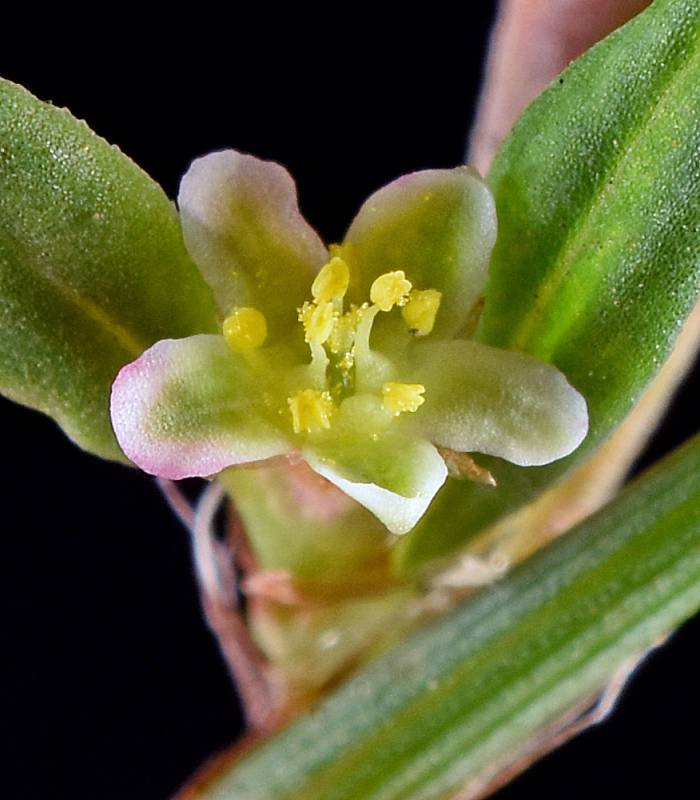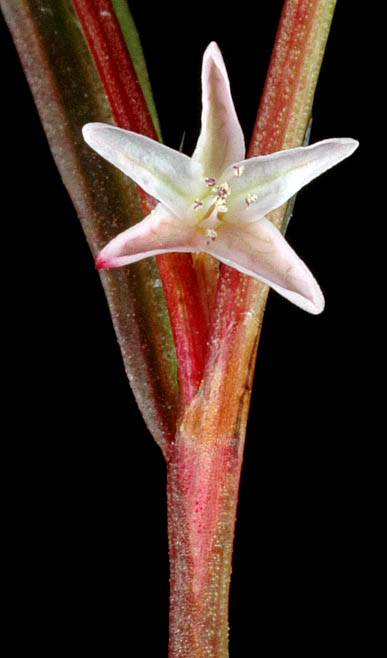Polygonum aviculare
Polygonum douglasii
Douglas' knotweed, Douglas's knotweed
Numerous, bluish-green, only slightly reduced upward, narrowly oblong, 1-3 cm. long and 2-6 mm. broad, narrowed to a very short, jointed petiole;
stipules lacerate, 3-6 mm. long.
Alternate and numerous along the stem, linear to oblong, lanceolate or even ovate, 1-5 cm. long, sessile, jointed at the base, reduced to bracts above;
stipules sheathing, 5-15 mm. long, lacerate.
1-3 in the axils of the leaves or leaf-like bracts, the pedicles 1-3 mm. long, erect;
perianth 2.5 mm. long, divided 2/3 the length, the segments 5, oblong, sub-equal, greenish with white to pink or red margins.
In loose, elongate racemes and in the leaf axils, 1-4 flowers per node, on pedicles 1-4 mm. long, soon reflexed;
perianth 2.5-5 mm. long, the segments greenish with white, pink or reddish margins;
stamens 8, occasionally fewer.
Achene with 3 sharp angles, brownish, smooth.
Achene with three sharp angles, black, smooth and shining, about 3 mm. long.
Polygonum aviculare
Polygonum douglasii
- Local floras:
BC,
CA,
OR,
WA
- Local Web sites:
CalFlora,
CalPhotos,
Flora NW,
PNW Herbaria,
Turner Photog.
WildflowerSearch
iNaturalist (observations)
USDA Plants Database
- LBJ Wildflower Center
- SEINet
- Plants of the World Online
- Encyclopedia of Life
- Wikipedia
- Google Image Search
- Local floras:
BC,
CA,
OR,
WA
- Local Web sites:
CalFlora,
CalPhotos,
Flora NW,
PNW Herbaria,
Turner Photog.
WildflowerSearch
iNaturalist (observations)
USDA Plants Database
- LBJ Wildflower Center
- SEINet
- Plants of the World Online
- Encyclopedia of Life
- Wikipedia
- Google Image Search



